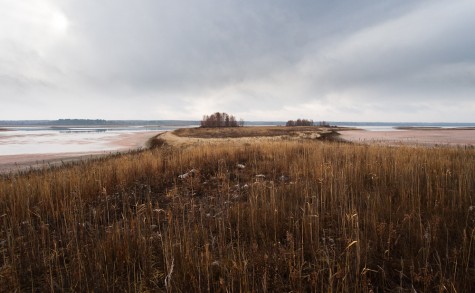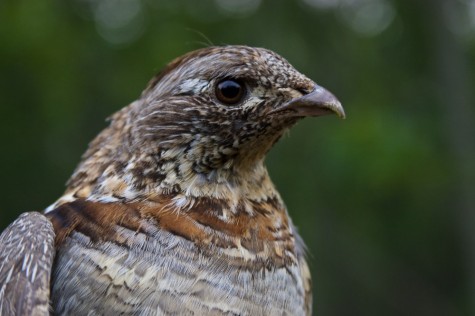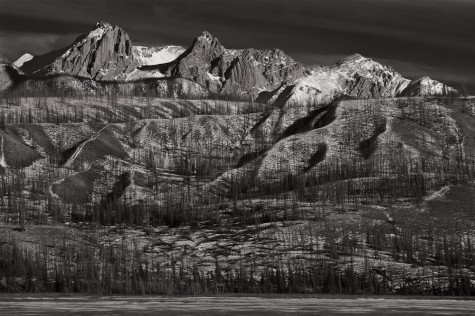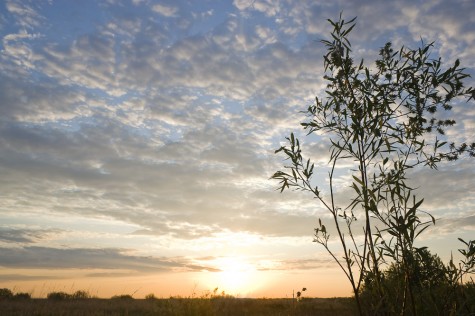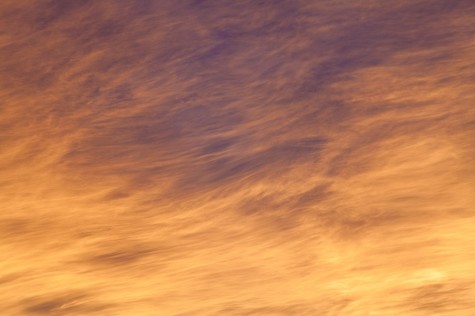This photograph is not brand new (it’s from earlier this winter), but I have been working with it recently, and would like to share it here. It had been a while since I’d had the time to hike in to this lake in the Ministik Game Bird Sanctuary, and it was a shock to see how far the water had receded since I’d last seen it. Not that I was terribly surprised–every lake at Ministik (and in most of Alberta) is showing the effect of the dry years we’ve had. What did surprise me was the colour of the mudflats–the pinkish-reddish hue in the photo is an accurate depiction (as much as is possible–but that’s another debate). The grey sky complemented the mudflats and dried grass, giving a very subtle, subdued pallette.
|
||
|
After a pretty slow day at the Gold Bar craft sale, I’m hoping for the best at this year’s TKUC Guild christmas gift sale this coming Saturday, the 28th of November. I’ll have a table set up at The King’s University College (9125 50 street, here’s a map) between 10 AM — 3 PM. There’s a $2 admission (kid’s are free) and over 70 vendors. I’ll again have photographic prints and cards for sale, and this time I’ll print enough of the popular ones! 
While sitting at the art sale this past weekend a good friend of mine dropped by and asked me to make her a print of this image. It has been a long time since I’d looked at this photograph, but I’m glad she asked because I’m really enjoying revisiting it. This was one of the largest Oyster mushroom clumps that I’ve ever come across. I was employed doing bird surveys near Calling Lake, AB in the summer of 2004, and it’s one of the best places I’ve been for photographing mushrooms (and black bears). I like how I was able to fill the frame with the folds and gills of this mushroom, emphasizing the organic shapes and colours. And it smelled absolutely terrific. 
I don’t make many wildlife photographs, but this one I couldn’t pass up. I took this photo while working at the Beaverhill Bird Observatory near Tofield. I must admit that while this is a wild Ruffed Grouse, he wasn’t particularly free at the time of this photo. One of the things that I love about banding birds is getting to see them so close. At this range, even the drabbest sparrows (and grouse) are full of subtle detail, pattern and colour. I like how this photo captures some of those close-up details that are normally missed at regular grouse-viewing distances. It was a treat to catch this bird, and I’m glad to have this photo as a reminder. 
One of my favourite photographs I’ve taken, (yes, I’ll have a copy at the show this weekend), is this one which I called “Miette range from Talbot Lake.” I made this exposure back in February of 2007 as I was driving home through Jasper National Park. The dead trees in this photo were killed in a controlled burn forest fire in 2003. The still-standing, blackened trunks contrasted beautifully with the dusting of snow on the ridge. What I really love about the post-burn Talbot Lake area is that you get to see the subtle ridge and valley topography of the hills, which is normally covered by a thick blanket of spruce and fir trees. Combine that with a little side lighting, a dust of snow or blooming fireweed, and me with a camera–I could happily spend all day. 
Here’s another photo that I’ve prepared for the Goldbar craft sale (see previous post for details). I made this exposure in the summer of 2008 while working banding birds at the Beaverhill Bird Observatory near Tofield, AB. I saw many beautiful sunrises that summer, although I didn’t always get the chance to capture them in a photograph. 
This afternoon I went out for a walk at the Cooking Lake-Blackfoot Provincial Recreation Area. I spent several hours happily walking the Lost Lake/Islet Lake trails in unseasonably warm weather, but with a flat, grey layer of drab altostratus cloud overhead. That is to say, there weren’t many good photographic opportunities. As I was driving home, however, the sun snuck through a gap in the cloud just above the horizon–with stunning effect. I had to pull over to watch the–all too brief–colours spread across nearly the whole sky, and of course, take some photographs. I find this type of sky can be very hard to get a good exposure, where it’s not too dark but the highlights (especially the yellows) aren’t blown out or over-saturated, leaving detail-less areas within the wispy strands of cloud. I think this one turned out quite well, and I really like how the pattern of the cloud could be easily mistaken for fire, which is just what the sky looked like for a few minutes–aflame. I hope you enjoy it too. 
|
||
|
Copyright © 2009-2025 Jonathan Martin-DeMoor |
||

